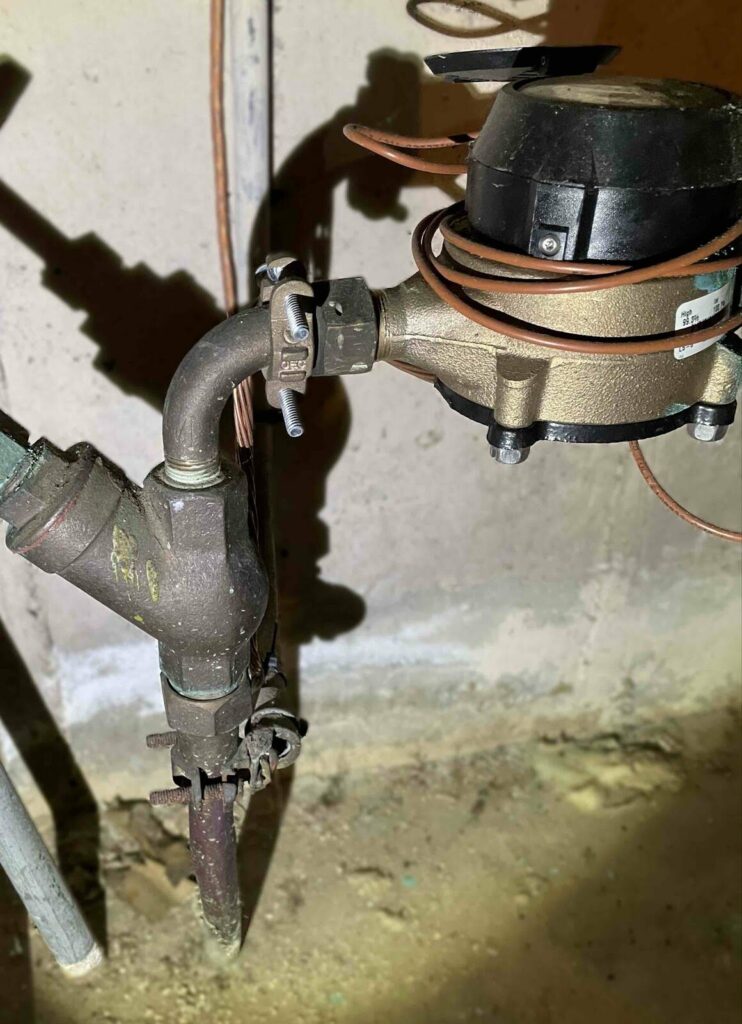You may have recently received an email or letter from the Acton Water District that requested information about the service line that sends water from the District’s water main in the street into your home or business. These mailings ask the occupant to submit information and a picture of the pipe connected to their water meter, to a website developed by the Massachusetts Department of Environmental Protection (MassDEP), to help the District identify the pipe material. Following their recent outreach effort in January, the District received several phone calls from concerned citizens. Since this survey is related to recent revisions to the United States’ Environmental Protection Agency’s (USEPA’s) Lead and Copper Rule, one local social media post suggested that homeowners may soon be required to remove all of the lead-solder joints found in older homes or be forced to replace all of the home’s copper plumbing with plastic pipes. Please be assured that this is not the case. To address these concerns, I asked the Acton Water District Manager, Matthew Mostoller, and the District’s Environmental Manager, Alexandra Wahlstrom, to clarify the purpose of the information requests and discuss the goals of the Lead and Copper Rule Revisions.

Alex, what do the new Lead and Copper Rule Revisions require?
The service line material survey is the result of a directive included in the USEPA’s Lead and Copper Rule Revisions (LCRR), which was finalized in 2020. This new federal rule requires that public water systems create a thorough inventory of the service line materials used in their distribution network. The primary purpose of this directive is to locate and identify lead components in water distribution systems and enable water systems to develop a strategic plan to remove those components. It should be noted that this USEPA mandate only relates to connectors and service lines on the supply side of the water meter and has nothing to do with the premises plumbing inside homes or businesses.
Alex, how will the survey of the distribution system be performed?
The inventory that the District is required to perform will be difficult because its distribution system comprises more than one hundred thirty-five miles of water main and includes a variety of pipe materials. Like many water suppliers in the US, portions of the system are over one hundred years old. While the District has some records of the materials used in the construction and/or repair of older water mains and service lines, records documenting the material of the entirety of all approximately 6,500 service lines in the distribution system are not available. In the absence of historical records, the District is employing other methods to determine the material of unknown service lines, including physical excavation and the previously mentioned customer self-identification requests. Thus far, the District has uncovered no evidence of lead service lines in its system. However, lead connectors (known as goosenecks) were historically installed in some older service lines, and these connectors must be located in order for them to be removed in the future. The deadline for completing the initial service line inventory is October 16, 2024.
Alex, why have homeowners been asked to send a picture of their service line to the MassDEP?
The request to provide a picture of their service line using MassDEP’s tool provides a way to identify that portion of the service line without excavating, which significantly reduces the cost to the District as well as the potential disruption to the resident. These notices have only been sent to the owners of service lines that have not been previously documented, and are being distributed in small groups to make processing of the responses by District staff more manageable. Since the use of lead pipes in drinking water systems was banned by the Safe Drinking Water Act in 1986, requests for service line information have not been sent to customers whose homes were built after that date.
Matt, how much will the pipe inventory and the subsequent corrective action cost the District?
The cost of the mandated inventory and the work to replace outdated water services will be significant. At the District’s 2023 Annual Meeting, voters approved an expenditure of $200,000 for work to develop the initial inventory. Voters will be asked to approve an additional $500,000 at the 2024 Annual Meeting for further inventory development and the cost of service line replacement. However, a portion of these costs may eventually be covered by grants through the Clean Water Trust. Additional costs associated with the regulations will not be known until the initial phases of work are completed.
Matt, is there any risk that information provided by a customer of the Water District will result in repairs that must be paid by the homeowner?
As a reminder, the portion of the service line that brings water from the property line into a building is the responsibility of the property owner, and leak repairs on that portion of the service line must be performed at the owner’s expense. The District is still determining how privately owned sections of the service line will be handled should they be determined to need replacement under a future phase of this project, as there are legal and financial considerations that will need to be addressed. However, I want to make it clear that none of the information provided by water users in response to the service line material survey would be used to determine if repairs or improvements are necessary within the building.
Matt and Alex, is there anything that you would like to add to this interview?
We would like to thank District customers for their cooperation with the service line inventory program. The public’s assistance with this project is greatly appreciated and will help facilitate the removal of any lead components that may have been installed in the distribution system many years ago, prior to our current understanding of the dangers of lead exposure.
Dr. Parenti is a member of the Town of Acton Water Resource Committee and the Acton Water District Finance Committee.


